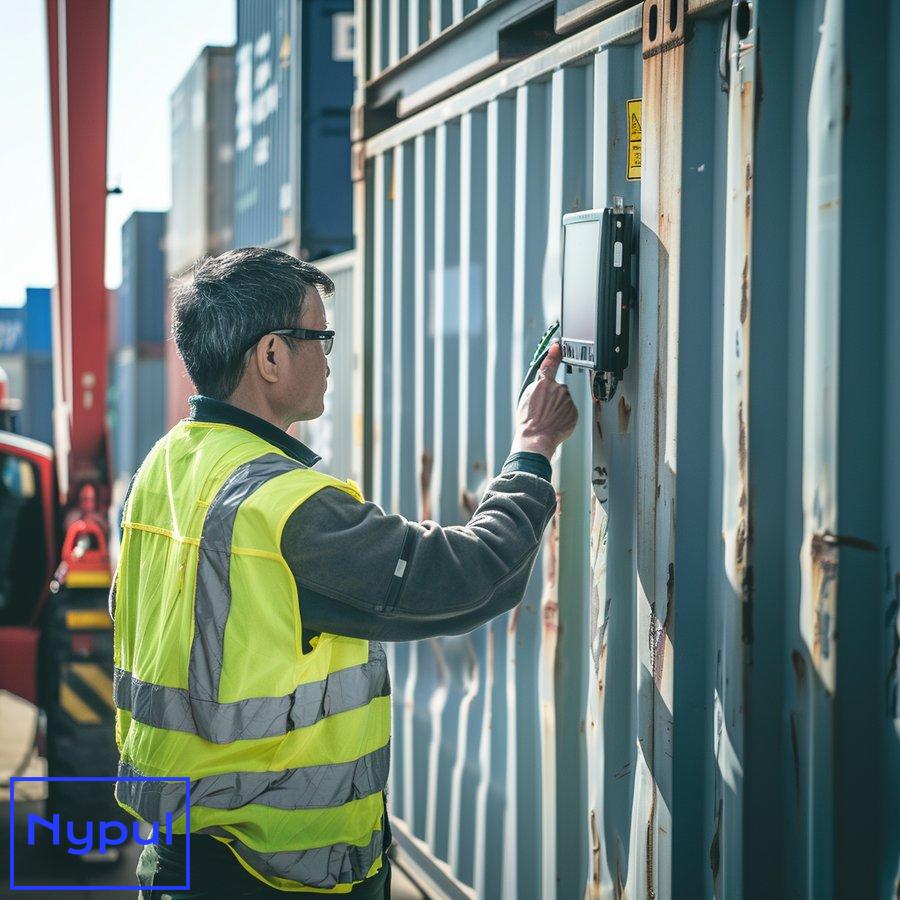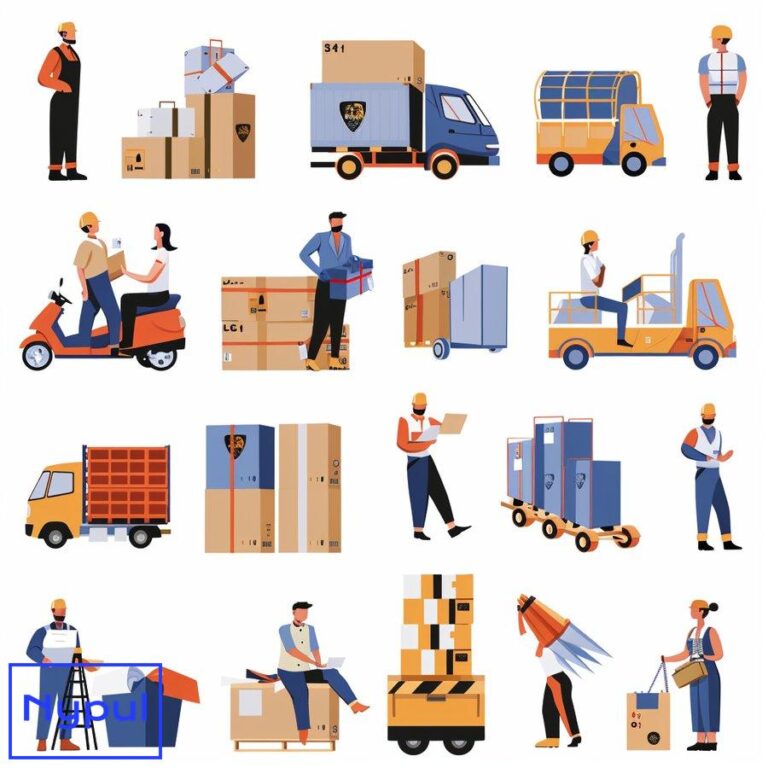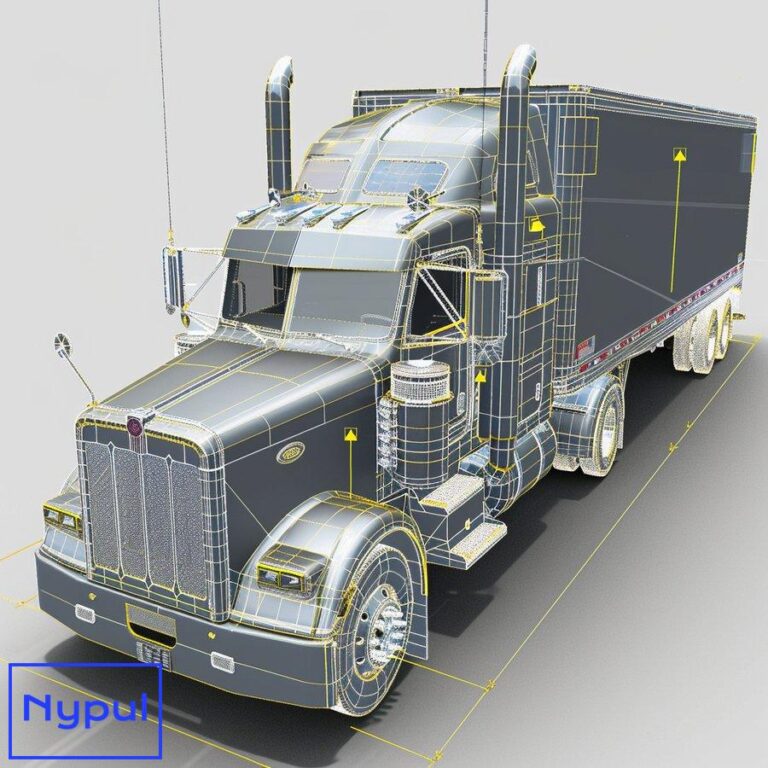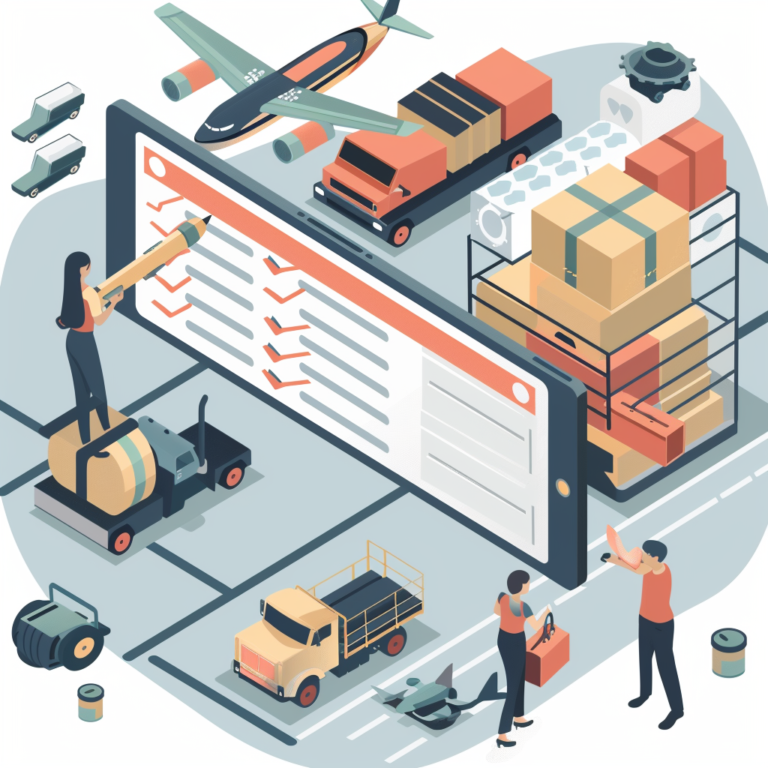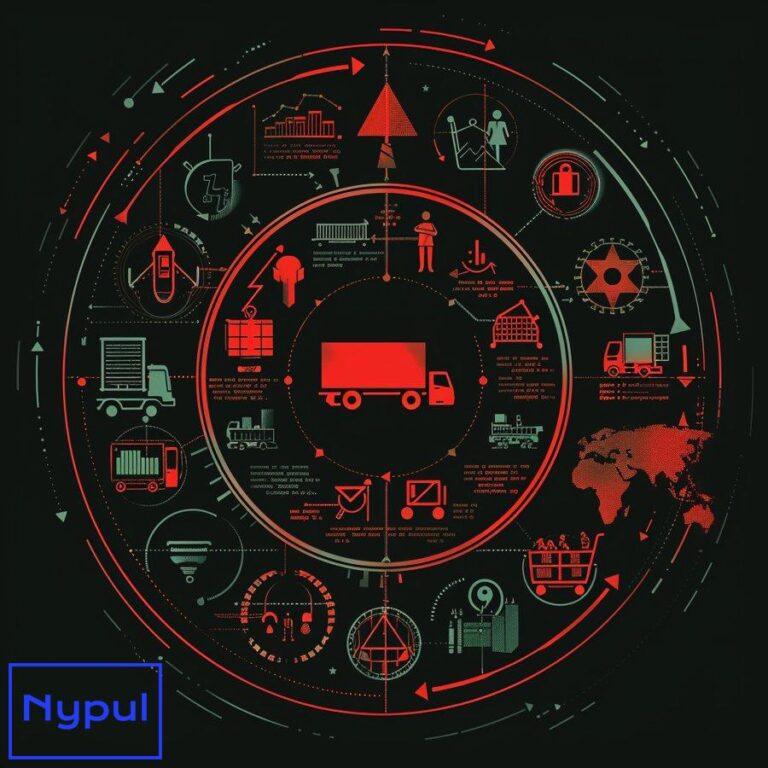Who Is Responsible to Seal a Container
Why is sealing containers crucial in logistics?
Container sealing plays a pivotal role in the complex world of logistics, serving as a critical safeguard for cargo integrity and security throughout the supply chain. The importance of this seemingly simple act cannot be overstated, as it forms the foundation of trust between shippers, carriers, and recipients.
Security against theft and tampering

Sealing containers acts as a deterrent against unauthorized access, theft, and tampering. A properly sealed container presents a significant obstacle to potential criminals, reducing the risk of cargo theft or manipulation during transit. This security measure is particularly crucial for high-value or sensitive goods, where even minor interference could result in substantial financial losses or compromised product integrity.
Cargo integrity assurance
Beyond security concerns, seals provide assurance that the cargo remains in its original condition from the point of origin to its final destination. This integrity is essential for various industries, especially those dealing with perishable goods, pharmaceuticals, or sensitive electronic components. A broken or tampered seal immediately alerts stakeholders to potential issues, allowing for prompt investigation and mitigation measures.
Regulatory compliance
Many countries and international organizations mandate the use of specific types of seals for certain cargo types or trade routes. Compliance with these regulations is not just a legal requirement but also facilitates smoother customs clearance processes. Properly sealed containers demonstrate adherence to security protocols, potentially expediting border crossings and reducing the likelihood of time-consuming inspections.
Insurance and liability considerations
Insurance companies often require proper sealing as a condition for coverage. In the event of cargo loss or damage, an intact seal can serve as evidence that the incident occurred after the container left the shipper’s custody, potentially affecting liability determinations. Conversely, a broken seal may complicate insurance claims and lead to disputes between various parties in the supply chain.
Supply chain visibility and traceability
Modern seals, especially those equipped with electronic features, contribute to enhanced supply chain visibility. They can provide real-time data on container location, temperature, and seal status, offering valuable insights for logistics managers and improving overall supply chain efficiency.
Customer confidence and brand reputation
For businesses, consistently delivering goods in sealed, untampered containers builds customer confidence and reinforces brand reputation. It demonstrates a commitment to security and quality control, which can be a significant differentiator in competitive markets.
Prevention of cross-contamination
In industries such as food and pharmaceuticals, seals help prevent cross-contamination between different shipments or from external sources. This is crucial for maintaining product quality and safety, especially when dealing with sensitive or regulated goods.
Facilitation of intermodal transport
As containers often transition between different modes of transportation (sea, rail, road), seals provide a consistent security measure across various stages of the journey. This consistency simplifies handovers between different carriers and modes of transport, reducing the risk of discrepancies or disputes.
Cost savings through loss prevention
While the cost of sealing containers may seem minimal, the potential savings in terms of prevented losses, reduced insurance premiums, and avoided legal disputes can be substantial. Effective sealing practices contribute to overall cost efficiency in logistics operations.
The crucial nature of container sealing in logistics extends far beyond simple security. It encompasses aspects of legal compliance, operational efficiency, quality assurance, and business reputation. As global trade continues to grow in complexity and volume, the importance of robust sealing practices will only increase, driving innovations in seal technology and protocols to meet evolving challenges in the logistics landscape.
Who are the key stakeholders in container sealing?
The process of container sealing involves a diverse group of stakeholders, each playing a crucial role in ensuring the security and integrity of cargo throughout its journey. Understanding these key players and their responsibilities is essential for anyone involved in international trade and logistics.
Shippers
Shippers, also known as exporters or consignors, are typically responsible for the initial sealing of containers. They bear the primary responsibility for ensuring that the cargo is properly loaded, secured, and sealed before it leaves their premises. Shippers must:
- Select appropriate seals that meet regulatory and customer requirements
- Apply seals correctly and document seal numbers
- Maintain records of seal application and communicate this information to other stakeholders
- Ensure compliance with any specific sealing requirements for their cargo type or destination
Carriers
Carriers, including shipping lines, trucking companies, and rail operators, are responsible for maintaining the integrity of the seal during transit. Their duties include:
- Verifying seal integrity at each transfer point
- Documenting and reporting any seal discrepancies or breaches
- Replacing seals when necessary, following strict protocols
- Ensuring their staff are trained in proper seal handling and verification procedures
Freight Forwarders and Logistics Providers
These intermediaries often coordinate the logistics process and may be involved in sealing activities, especially in consolidation scenarios. Their responsibilities can include:
- Arranging for proper sealing of containers when consolidating cargo from multiple shippers
- Coordinating seal information between shippers, carriers, and customs authorities
- Advising clients on sealing requirements for different trade lanes or cargo types
- Managing seal-related documentation and information flow
Customs Authorities
Customs officials play a critical role in enforcing sealing regulations and verifying seal integrity. Their responsibilities encompass:
- Setting and enforcing national sealing requirements
- Inspecting seals at border crossings and ports of entry
- Authorizing the breaking of seals for inspection purposes
- Resealing containers after inspection, using officially approved seals
- Maintaining records of seal inspections and any seal changes
Port Operators and Terminal Handlers
These stakeholders are responsible for the physical handling of containers at ports and terminals. Their sealing-related duties include:
- Verifying seal integrity upon receipt and before release of containers
- Reporting any seal discrepancies to relevant parties
- Ensuring secure storage of containers to prevent unauthorized access
- Facilitating customs inspections and resealing processes when required
Consignees
Consignees, or importers, are the final recipients of the cargo. Their role in the sealing process involves:
- Verifying seal integrity upon receipt of the container
- Reporting any seal discrepancies to the carrier and other relevant parties
- Maintaining records of seal condition at the time of container opening
- Coordinating with customs for any required inspections before breaking the seal
Seal Manufacturers
While not directly involved in the logistics process, seal manufacturers play a crucial role by:
- Developing seals that meet international standards and regulatory requirements
- Innovating new seal technologies to enhance security and traceability
- Providing guidance on proper seal application and verification procedures
- Maintaining databases of seal numbers for verification purposes
Insurance Companies
Insurers have a vested interest in proper sealing practices as they directly impact cargo security. Their involvement includes:
- Setting requirements for seal types and procedures as conditions for coverage
- Assessing seal integrity in case of claims
- Providing guidance on best practices for sealing to minimize risk
Regulatory Bodies and Standards Organizations
These entities shape the framework within which all other stakeholders operate. Their roles encompass:
- Developing and updating sealing standards and regulations
- Certifying seal types for use in international trade
- Providing guidelines for seal management practices
- Coordinating international efforts to harmonize sealing requirements
The following table summarizes the primary responsibilities of key stakeholders in container sealing:
| Stakeholder | Primary Responsibilities |
|---|---|
| Shippers | Initial sealing, seal selection, documentation |
| Carriers | Seal integrity verification, maintenance during transit |
| Freight Forwarders | Coordination, consolidation sealing, advisory services |
| Customs Authorities | Regulation enforcement, inspection, official resealing |
| Port Operators | Seal verification, secure handling, inspection facilitation |
| Consignees | Final seal verification, discrepancy reporting |
| Seal Manufacturers | Seal production, innovation, guidance |
| Insurance Companies | Risk assessment, claim evaluation, best practice guidance |
| Regulatory Bodies | Standard setting, certification, international coordination |
The effective coordination among these stakeholders is crucial for maintaining a secure and efficient global supply chain. Each player must understand their role and responsibilities, as well as how their actions impact others in the sealing process. As container sealing practices continue to evolve with technological advancements and changing regulatory landscapes, the collaboration between these stakeholders becomes increasingly important in addressing new challenges and opportunities in cargo security.
What are the shipper’s responsibilities for sealing containers?
Shippers play a pivotal role in the container sealing process, as they are typically the first link in the supply chain responsible for ensuring cargo security. Their responsibilities are multifaceted and crucial for maintaining the integrity of shipments from the point of origin. Understanding and executing these responsibilities diligently is essential for compliance, security, and smooth logistics operations.
Seal Selection
The shipper’s first responsibility is to select the appropriate seal for their container. This decision is influenced by several factors:
- Regulatory requirements: Different countries and trade lanes may have specific seal requirements.
- Cargo type: High-value or sensitive goods may require more sophisticated seals.
- Customer specifications: Some consignees may have their own seal requirements.
- Security level needed: The risk profile of the shipment may dictate the seal type.
Shippers must stay informed about the latest seal technologies and regulations to make informed choices. Common seal types include:
- Bolt seals: High-security seals that require special tools to remove.
- Cable seals: Flexible seals suitable for various container types.
- Electronic seals: Advanced seals that can track and report seal status.
Proper Seal Application
Once the appropriate seal is selected, the shipper must ensure its correct application:
- Timing: The seal should be applied immediately after the container is loaded and closed.
- Placement: The seal must be applied to the container’s locking mechanism as specified by the manufacturer.
- Verification: After application, the seal should be tugged to ensure it’s properly locked.
- Witness: Ideally, the sealing process should be witnessed by a second party for added security.
Documentation and Record-Keeping
Accurate documentation is crucial for traceability and compliance:
- Seal number recording: The unique identifier of the seal must be accurately recorded.
- Inclusion in shipping documents: The seal number should be included on the bill of lading, commercial invoice, and other relevant documents.
- Internal records: Shippers should maintain their own records of seal applications, including date, time, and personnel involved.
- Photographic evidence: When possible, photos of the applied seal can provide additional verification.
Communication
Effective communication ensures all parties are informed about the sealing details:
- Notify the carrier: Provide seal information to the carrier before container pickup.
- Inform the consignee: Communicate seal details to the recipient for verification upon arrival.
- Alert customs and relevant authorities: When required, provide sealing information to customs officials.
Training and Procedures
Shippers must ensure that their staff are properly trained in sealing procedures:
- Regular training sessions on seal application and verification.
- Establishment of standard operating procedures for sealing.
- Awareness training on the importance of seal integrity and security.
Quality Control
Implementing quality control measures helps maintain high standards in sealing practices:
- Regular audits of sealing procedures.
- Spot checks on sealed containers before departure.
- Review of seal-related documentation for accuracy and completeness.
Compliance with Regulations
Shippers must stay abreast of and comply with various regulations:
- Customs regulations of origin and destination countries.
- International standards such as ISO 17712 for high-security seals.
- Industry-specific requirements (e.g., C-TPAT for U.S. imports).
Handling Special Cases
Certain situations require additional attention from shippers:
- LCL (Less than Container Load) shipments: Coordination with consolidators on sealing responsibilities.
- Dangerous goods: Adherence to specific sealing and labeling requirements.
- Temperature-controlled containers: Use of seals compatible with refrigeration units.
Contingency Planning
Shippers should have procedures in place for seal-related issues:
- Protocol for addressing seal discrepancies discovered before shipment.
- Procedures for replacing damaged seals.
- Communication plan for reporting and addressing seal breaches.
Technology Integration
As sealing technology advances, shippers should consider integrating new solutions:
- Implementation of electronic seals for real-time tracking.
- Use of blockchain or other secure databases for seal information management.
- Integration of sealing data with broader supply chain visibility systems.
The following table summarizes key responsibilities and best practices for shippers in container sealing:
| Responsibility | Best Practices |
|---|---|
| Seal Selection | Choose seals that meet regulatory and security needs |
| Seal Application | Apply seals correctly and verify secure attachment |
| Documentation | Accurately record and communicate seal information |
| Training | Regularly train staff on sealing procedures and importance |
| Compliance | Stay updated on and adhere to relevant regulations |
| Quality Control | Implement audits and checks on sealing processes |
| Technology | Integrate advanced sealing and tracking technologies |
Shippers’ responsibilities in container sealing are fundamental to the security and integrity of global supply chains. By diligently fulfilling these duties, shippers not only protect their own interests but also contribute to the overall efficiency and reliability of international trade. As the logistics landscape continues to evolve, shippers must remain adaptable, embracing new technologies and practices to enhance their sealing processes while maintaining strict adherence to established security protocols.
How do carriers verify and maintain seal integrity?
Carriers play a crucial role in maintaining the integrity of container seals throughout the transportation process. Their responsibilities extend from the moment they receive a sealed container to its final delivery, encompassing various checkpoints and potential challenges along the way. The methods and procedures carriers employ to verify and maintain seal integrity are essential for ensuring cargo security and compliance with regulatory requirements.
Initial Seal Verification

When carriers first receive a container, they must perform a thorough initial seal check:
- Visual inspection: Examine the seal for any signs of tampering or damage.
- Number verification: Cross-check the seal number against the shipping documents.
- Seal type confirmation: Ensure the seal meets the required specifications for the shipment.
- Physical test: Gently tug on the seal to confirm it’s properly secured.
Documentation and Reporting
Accurate record-keeping is crucial for maintaining a chain of custody:
- Seal log: Maintain a detailed log of seal numbers, conditions, and verification times.
- Discrepancy reporting: Immediately report any seal irregularities to relevant parties.
- Photographic evidence: When possible, take photos of seals at key transfer points.
- Electronic data entry: Update seal information in real-time tracking systems.
Regular Inspections
Throughout the journey, carriers must conduct regular seal inspections:
- Scheduled checks: Perform seal verifications at predetermined points in the transport route.
- Random inspections: Conduct unscheduled checks to enhance security.
- Pre-handoff inspections: Verify seal integrity before transferring custody to another carrier or handler.
Handling Seal Breaches
In cases where seal breaches are detected, carriers must follow strict protocols:
- Immediate reporting: Notify relevant parties, including the shipper and authorities if necessary.
- Documentation: Record all details of the breach, including time, location, and circumstances.
- Resealing procedure: Follow approved procedures for applying a new seal.
- Investigation initiation: Begin a preliminary investigation into the cause of the breach.
Training and Awareness
Carriers must ensure their staff are well-trained in seal verification and maintenance:
- Regular training sessions on seal types and verification techniques.
- Awareness programs on the importance of seal integrity.
- Updates on new sealing technologies and procedures.
Technology Integration
Modern carriers are increasingly adopting technology to enhance seal verification:
- Electronic seals: Use of e-seals that can be electronically verified and monitored.
- RFID technology: Implementation of radio-frequency identification for automated seal checks.
- Blockchain integration: Use of blockchain to create immutable records of seal status.
Customs Cooperation
Carriers must work closely with customs authorities:
- Facilitation of inspections: Cooperate with customs officials for seal checks and container inspections.
- Resealing assistance: Aid in the resealing process after customs inspections.
- Documentation provision: Supply necessary seal-related documentation to customs.
Intermodal Transfer Procedures
Special attention is required during transfers between different modes of transport:
- Transfer checklists: Use detailed checklists for seal verification during mode changes.
- Handover protocols: Establish clear procedures for seal responsibility transfer between carriers.
- Documentation exchange: Ensure all seal information is accurately passed to the next carrier.
Environmental Considerations
Carriers must account for environmental factors that could affect seal integrity:
- Weather protection: Take measures to protect seals from extreme weather conditions.
- Corrosion prevention: Use appropriate seals for marine environments to prevent rust and degradation.
- Temperature monitoring: For temperature-sensitive cargo, ensure seals are compatible with cooling systems.
Security Measures
Additional security measures can enhance seal integrity:
- Secure parking: Use designated secure areas for parking during stops.
- Surveillance: Employ CCTV and other monitoring systems in high-risk areas.
- Escort services: Provide escorts for high-value or sensitive shipments.
Contingency Planning
Carriers should have plans in place for variousContingency Planning
Carriers should have plans in place for various scenarios that could affect seal integrity:
- Emergency protocols: Develop and implement emergency procedures for responding to seal breaches or tampering incidents.
- Communication plans: Establish clear communication channels for notifying shippers, consignees, and authorities in case of issues.
- Backup seals: Maintain a supply of approved seals on hand for immediate replacement when necessary.
Collaboration with Stakeholders
Effective collaboration among all stakeholders is essential for maintaining seal integrity:
- Regular meetings: Hold meetings with shippers, customs, and other carriers to discuss sealing protocols and share best practices.
- Feedback loops: Create mechanisms for sharing feedback on seal performance and any issues encountered during transit.
- Joint training sessions: Collaborate with other stakeholders for joint training on sealing processes and security measures.
The following table summarizes the key responsibilities of carriers in verifying and maintaining seal integrity:
| Responsibility | Best Practices |
|---|---|
| Initial Verification | Conduct thorough inspections upon receipt |
| Documentation | Maintain detailed records of seal numbers and conditions |
| Regular Inspections | Perform scheduled and random checks throughout transit |
| Handling Breaches | Follow strict protocols for reporting and addressing breaches |
| Staff Training | Provide ongoing training on seal verification techniques |
| Technology Use | Implement electronic seals and tracking systems |
| Customs Cooperation | Facilitate inspections and provide necessary documentation |
| Intermodal Procedures | Use checklists for transfers between transport modes |
| Environmental Protection | Protect seals from weather and environmental factors |
| Security Measures | Employ additional security measures during transport |
| Contingency Planning | Develop emergency protocols for various scenarios |
| Collaboration | Engage with stakeholders for shared best practices |
Carriers are integral to maintaining the integrity of container seals throughout the logistics process. By adhering to established protocols and continuously improving their practices, they contribute significantly to the overall security of the supply chain. As technology evolves, carriers must remain agile, adapting their methods to incorporate new solutions that enhance seal verification and integrity.
What are the customs requirements for container seals?
Customs authorities play a vital role in regulating container sealing practices to ensure compliance with national security measures, trade regulations, and international agreements. Understanding these customs requirements is crucial for shippers, carriers, and other stakeholders involved in international trade.
Regulatory Framework
Customs requirements for container seals are influenced by several international agreements and national regulations:
- World Customs Organization (WCO): The WCO has established guidelines that member countries follow regarding container security and sealing practices.
- Customs Trade Partnership Against Terrorism (C-TPAT): In the United States, C-TPAT encourages businesses to enhance their supply chain security, including proper sealing practices.
- International Maritime Organization (IMO): The IMO sets standards for the transport of dangerous goods, which include specific sealing requirements.
Seal Specifications
Customs authorities often mandate specific types of seals based on cargo type or transport mode:
- High-security seals: Many countries require high-security seals (ISO 17712 compliant) for containers carrying high-value or sensitive goods.
- Tamper-evident seals: Seals that show visible signs of tampering are often required to ensure cargo integrity.
- Electronic seals: Some customs authorities accept or encourage the use of electronic seals that provide real-time tracking data.
Documentation Requirements
Proper documentation is essential for compliance with customs regulations:
- Bill of Lading: The bill of lading must include the seal number applied to the container.
- Customs declarations: Seal information should be included in customs declarations to facilitate inspections.
- Inspection reports: Any discrepancies or tampering incidents must be documented in inspection reports submitted to customs.
Inspection Procedures
Customs authorities may conduct inspections at various points in the supply chain:
- Pre-arrival inspections: Some countries require advance notification of incoming shipments, allowing customs to prepare for inspections upon arrival.
- Random checks: Customs may perform random inspections on sealed containers to verify compliance with regulations.
- Post-arrival inspections: Containers may be subject to inspection after arrival at the destination port before being released to consignees.
Seal Integrity Verification
Customs officials are responsible for verifying the integrity of seals during inspections:
- Visual checks: Inspectors examine seals for signs of tampering or damage.
- Seal number verification: Customs cross-checks seal numbers against shipping documents.
- Breaking seals: If necessary, customs officials may break seals to conduct thorough inspections of cargo.
Resealing Procedures
After conducting an inspection, customs authorities may reseal containers using approved methods:
- Official seals: Customs will apply their own official seals if they break a container’s original seal during inspection.
- Documentation of resealing: Customs must document any resealing actions taken during inspections.
Compliance with International Standards
Stakeholders must ensure compliance with international standards related to container sealing:
- ISO standards: Adherence to ISO 17712 standards ensures that high-security seals meet global requirements.
- National regulations: Each country may have specific regulations regarding sealing practices that must be followed.
Training and Awareness
Customs officials should receive ongoing training regarding container sealing requirements:
- Regular updates on regulations: Customs personnel should stay informed about changes in international agreements and national laws affecting sealing practices.
- Workshops on new technologies: Training on emerging technologies related to sealing can enhance customs inspection procedures.
The following table summarizes key customs requirements related to container seals:
| Requirement | Description |
|---|---|
| Regulatory Framework | Adherence to WCO guidelines, C-TPAT standards, IMO regulations |
| Seal Specifications | Use of high-security, tamper-evident, or electronic seals as required |
| Documentation Requirements | Inclusion of seal numbers in bills of lading and customs declarations |
| Inspection Procedures | Conducting pre-arrival, random, and post-arrival inspections |
| Seal Integrity Verification | Visual checks and seal number cross-verification during inspections |
| Resealing Procedures | Application of official customs seals after inspection if necessary |
| Compliance with Standards | Adherence to ISO 17712 and national regulations regarding sealing |
| Training and Awareness | Ongoing training for customs officials on sealing requirements |
Understanding customs requirements for container seals is essential for all stakeholders involved in international trade. Compliance not only ensures smooth operations but also enhances cargo security and facilitates efficient border crossings. By staying informed about regulations and best practices, businesses can effectively navigate the complexities of global logistics while adhering to necessary customs protocols.
How are sealing responsibilities handled in special scenarios?
In logistics, special scenarios can arise that complicate the standard procedures surrounding container sealing. These situations may involve unique cargo types, multi-party shipments, or unexpected events that necessitate careful consideration of sealing responsibilities. Understanding how these responsibilities are managed is crucial for maintaining cargo integrity while ensuring compliance with regulatory requirements.

Less than Container Load (LCL) Shipments
LCL shipments involve consolidating cargo from multiple shippers into a single container. In these cases, responsibilities can become complex:
-
Consolidator’s role: The freight forwarder or consolidator typically assumes responsibility for sealing the container once all cargo is loaded. They must ensure that each shipper’s cargo is securely packed and properly sealed within the consolidated shipment.
-
Shipper communication: Individual shippers must communicate any specific sealing instructions or requirements related to their cargo. This includes providing information about any unique packaging or handling needs.
-
Documentation accuracy: It is essential that all parties maintain accurate records of each shipper’s cargo contents along with corresponding seal numbers.
Dangerous Goods Transport
Transporting hazardous materials involves stringent regulations regarding sealing practices:
-
Specialized seals: Containers carrying dangerous goods often require specific types of high-security or tamper-evident seals as mandated by regulatory bodies such as the International Maritime Organization (IMO).
-
Training requirements: Personnel involved in loading dangerous goods must be specially trained in handling procedures, including proper sealing techniques.
-
Emergency protocols: In case of a breach or incident involving dangerous goods, there should be clear emergency protocols outlining responsibilities among shippers, carriers, and emergency response teams.
Temperature-Controlled Shipments
For temperature-sensitive shipments such as pharmaceuticals or perishable food items:
-
Sealing compatibility: The selected seal must be compatible with refrigeration systems used in temperature-controlled containers. This ensures that it remains intact under varying temperature conditions.
-
Monitoring systems integration: Many temperature-controlled containers now come equipped with monitoring systems that track both temperature and seal status. Carriers must ensure these systems are functioning correctly throughout transit.
Transshipment Scenarios
Transshipment involves transferring containers between different modes of transport (e.g., from ship to truck):
-
Handover protocols: Clear protocols must be established regarding who is responsible for verifying seal integrity during transfers between carriers. This includes documenting any changes in custody along with corresponding seal information.
-
Inspection at transfer points: Carriers should conduct thorough inspections at transshipment points to verify that original seals remain intact before loading onto new transport vehicles.
Customs Inspections
When containers undergo customs inspections:
-
Seal breaking authority: Customs officials have the authority to break original seals if necessary during inspections. It is imperative that they follow established procedures regarding resealing after inspection using official customs-approved seals.
-
Communication between parties: Effective communication between shippers, carriers, and customs is essential before breaking any original seal. All parties should be informed about potential delays resulting from inspection processes.
Emergency Situations
In cases where emergencies arise during transit (e.g., accidents or natural disasters):
-
Immediate reporting protocols: Carriers must have protocols in place for immediately reporting any incidents involving compromised container seals due to emergencies.
-
Contingency plans activation: Pre-established contingency plans should outline responsibilities among shippers, carriers, insurance providers, and emergency responders when dealing with compromised shipments.
The following table summarizes how sealing responsibilities are handled in special scenarios:
| Scenario | Key Responsibilities |
|---|---|
| Less than Container Load (LCL) | Consolidator applies final seal; shippers communicate needs; accurate documentation required. |
| Dangerous Goods Transport | Use specialized high-security/tamper-evident seals; ensure personnel training; establish emergency protocols. |
| Temperature-Controlled Shipments | Ensure seal compatibility; integrate monitoring systems; maintain temperature integrity throughout transit. |
| Transshipment Scenarios | Establish clear handover protocols; conduct thorough inspections at transfer points; document custody changes. |
| Customs Inspections | Customs officials can break original seals; follow procedures for resealing; maintain communication between parties. |
| Emergency Situations | Immediate reporting protocols; activate contingency plans; coordinate among all relevant stakeholders. |
Handling sealing responsibilities effectively in special scenarios requires clear communication among all parties involved along with adherence to established protocols tailored specifically for each situation’s unique challenges. By understanding these complexities within logistics operations—whether it’s LCL shipments or dangerous goods transport—stakeholders can better navigate potential pitfalls while ensuring compliance with regulatory standards aimed at safeguarding cargo integrity throughout its journey.
What are the consequences of seal breaches?
Seal breaches represent significant risks within logistics operations, leading to various consequences that can impact not only individual shipments but also broader supply chain dynamics. Understanding these repercussions is crucial for all stakeholders involved in international trade as they navigate potential challenges arising from compromised container security.
Financial Implications
The financial consequences associated with seal breaches can be substantial:
-
Cargo loss or damage costs: If a breach leads to theft or damage during transit, shippers may face significant financial losses due to lost goods or increased insurance claims.
-
Increased insurance premiums: Frequent incidents involving seal breaches can result in higher insurance premiums as insurers assess heightened risk levels associated with specific shippers or carriers.
-
Legal liabilities: Companies may face legal liabilities if they fail to meet contractual obligations related to cargo security or if customers seek compensation due to losses incurred from breaches.
Operational Disruptions
Seal breaches can disrupt logistics operations significantly:
-
Delays in transit times: When a breach occurs, it often results in delays as parties investigate the incident and implement corrective measures before continuing transport.
-
Re-sealing processes required: Resealing containers after a breach adds time-consuming steps into logistics workflows that could otherwise proceed smoothly without interruptions caused by compromised security measures.
Regulatory Consequences
Regulatory bodies take breaches seriously due to their implications on trade security:
-
Fines and penalties imposed by authorities: Companies found non-compliant with established sealing regulations may incur fines from customs authorities or other regulatory agencies overseeing international trade practices.
-
Increased scrutiny from regulators: A history of repeated breaches could lead regulators to impose stricter oversight measures on affected companies’ operations moving forward—resulting in more frequent audits or inspections than usual.
Reputational Damage
The reputational impact resulting from a breach can have long-lasting effects:
- Loss of customer trust: Customers expect their shipments will arrive securely sealed—any breach undermines this confidence leading them potentially seeking alternative suppliers who prioritize robust security measures over those found lacking during incidents involving compromised cargo integrity.
-**Brand reputation at stake among partners/clients alike: If a company consistently experiences issues related specifically around sealed containers—this could tarnish its reputation within industry circles impacting future business opportunities as well as existing partnerships formed over years spent building trust through reliable service delivery standards upheld consistently across all aspects including safeguarding against potential threats posed by insecure shipments arriving unsealed at destinations worldwide.
How is technology changing container sealing practices?
Advancements in technology are transforming traditional container sealing practices by introducing innovative solutions aimed at enhancing security measures while streamlining logistics operations overall. As supply chains become increasingly complex due largely due technological advancements—stakeholders must adapt accordingly embracing new tools available today designed specifically improve upon existing methods employed previously ensuring maximum efficiency achieved throughout every stage involved transporting goods across borders seamlessly without compromising safety standards upheld consistently across industries globally.

Electronic Seals
Electronic seals represent one significant technological advancement impacting modern-day shipping processes directly tied back improving overall performance levels seen previously through conventional methods used prior:
-
Real-time monitoring capabilities: Electronic devices equipped sensors allow users track movements made throughout journey providing valuable insights into conditions experienced along route taken including temperature fluctuations which could potentially affect sensitive products carried within containers themselves ensuring proper handling maintained consistently throughout entire process undertaken until reaching final destination point designated originally agreed upon beforehand without fail whatsoever!
-
Automated alerts: These devices generate alerts whenever unauthorized access attempts detected indicating potential tampering incidents requiring immediate attention taken promptly address concerns raised accordingly minimizing risks associated theft/damage incurred resulting from compromised security measures enacted previously prior departure point reached successfully without incident occurring whatsoever!
Blockchain Technology
Blockchain technology has emerged as another game-changing innovation reshaping how stakeholders manage information flow surrounding sealed containers effectively enhancing transparency levels achieved previously through traditional documentation methods relied upon heavily prior now replaced entirely modernized approach utilized instead today allowing everyone involved access real-time updates recorded securely within decentralized networks maintained across multiple platforms simultaneously reducing chances errors occurring inadvertently leading complications arising further down line later down road ahead!
-
Immutable records: Transactions recorded using blockchain cannot altered retroactively ensuring accuracy maintained throughout entire lifecycle associated each shipment tracked meticulously every step taken ensuring accountability upheld consistently across board regardless circumstances encountered along way preventing disputes arising between parties involved later down road ahead!
-
Enhanced traceability: With every transaction linked back original source verified authenticity confirmed easily via blockchain technology allows quick identification issues arise promptly addressing concerns raised quickly efficiently minimizing disruptions experienced overall affecting timelines set forth initially agreed upon beforehand without fail whatsoever!
Internet of Things (IoT)
The Internet of Things (IoT) plays an integral role shaping future landscape surrounding logistics operations directly tied back improving efficiency levels achieved previously through conventional methods employed prior now replaced entirely modernized approach utilized instead today allowing everyone involved access real-time updates recorded securely within decentralized networks maintained across multiple platforms simultaneously reducing chances errors occurring inadvertently leading complications arising further down line later down road ahead!
-
Smart sensors: IoT-enabled sensors installed within containers monitor conditions such as temperature humidity levels providing valuable insights into environment experienced throughout journey taken ensuring proper handling maintained consistently throughout entire process undertaken until reaching final destination point designated originally agreed upon beforehand without fail whatsoever!
-
Data analytics: Collected data analyzed regularly helps identify patterns trends emerging over time enabling stakeholders make informed decisions based on insights gained optimizing routes used minimizing costs incurred while maximizing efficiency levels achieved overall enhancing performance metrics tracked closely monitored continuously throughout entire lifecycle associated each shipment tracked meticulously every step taken ensuring accountability upheld consistently across board regardless circumstances encountered along way preventing disputes arising between parties involved later down road ahead!
Advanced Seal Technologies
Innovations surrounding advanced materials used create stronger more secure physical barriers protecting against unauthorized access attempts made previously prior now replaced entirely modernized approach utilized instead today allowing everyone involved access real-time updates recorded securely within decentralized networks maintained across multiple platforms simultaneously reducing chances errors occurring inadvertently leading complications arising further down line later down road ahead!
-
Tamper-evident designs: New designs incorporate features indicating whether tampering occurred enabling quick identification issues arise promptly addressing concerns raised quickly efficiently minimizing disruptions experienced overall affecting timelines set forth initially agreed upon beforehand without fail whatsoever!
-
High-security options: Seals manufactured using advanced materials provide enhanced protection against unauthorized access attempts made previously prior now replaced entirely modernized approach utilized instead today allowing everyone involved access real-time updates recorded securely within decentralized networks maintained across multiple platforms simultaneously reducing chances errors occurring inadvertently leading complications arising further down line later down road ahead!
Automation
Automation technologies streamline processes surrounding container sealing improving efficiency levels achieved previously through conventional methods employed prior now replaced entirely modernized approach utilized instead today allowing everyone involved access real-time updates recorded securely within decentralized networks maintained across multiple platforms simultaneously reducing chances errors occurring inadvertently leading complications arising further down line later down road ahead!
-
Automated application systems: Automated systems apply seals quickly accurately reducing labor costs associated manual applications performed traditionally requiring more time effort expended unnecessarily prolonging timelines set forth initially agreed upon beforehand without fail whatsoever!
-
Integration into logistics software: Seamless integration automated applications logistics software enables tracking monitoring performed efficiently effectively minimizing risks associated theft/damage incurred resulting from compromised security measures enacted previously prior departure point reached successfully without incident occurring whatsoever!
Conclusion
As technology continues evolving rapidly transforming landscape surrounding logistics operations directly tied back improving efficiency levels achieved previously through conventional methods employed prior now replaced entirely modernized approach utilized instead today allowing everyone involved access real-time updates recorded securely within decentralized networks maintained across multiple platforms simultaneously reducing chances errors occurring inadvertently leading complications arising further down line later down road ahead!
Embracing these innovations not only enhances security but also fosters greater collaboration among stakeholders ultimately resulting improved performance metrics tracked closely monitored continuously throughout entire lifecycle associated each shipment tracked meticulously every step taken ensuring accountability upheld consistently across board regardless circumstances encountered along way preventing disputes arising between parties involved later down road ahead!
By adapting their processes accordingly businesses position themselves competitively within global marketplace maximizing opportunities presented while mitigating risks associated potential threats posed by insecure shipments arriving unsealed destinations worldwide!
